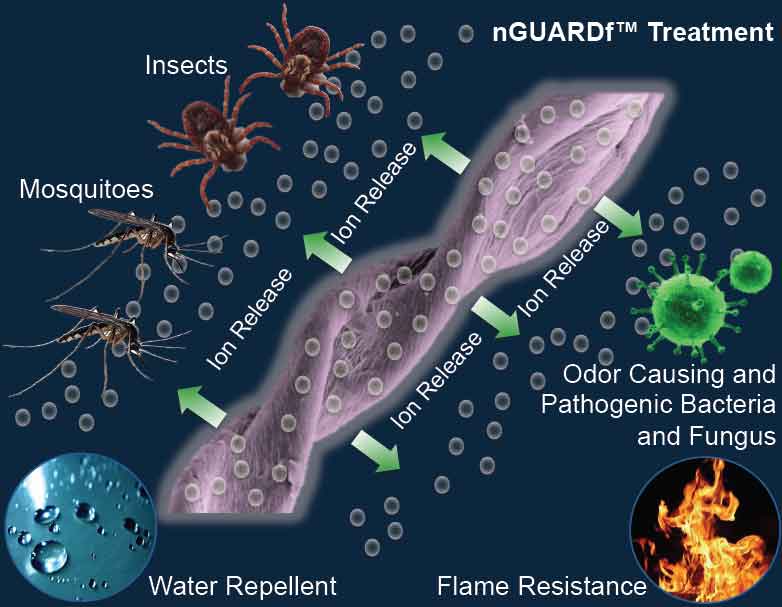
April 10, 2019 – Breaking News – U.S. Fire Administration
The U.S. Fire Administration reported over 1.3 million structure fires in 2017 causing an estimated 3,400 deaths, 14,670 injuries and $23 billion dollars in damages.
The high cost of today’s fire problem in lives and property is leading some researchers to look for innovative fire protection solutions.
One such solution is nanotechnology. It is used to make building and product materials stronger, lighter and at the same time, more fire resistant.
What is nanotechnology?
Nanotechnology is the science, engineering and technology conducted at the nanoscale, (which is about 1 to 100 nanometers) that enables the manipulation of materials to fit existing needs.
How is nanotechnology used?
Nanotechnology is used in:

-
Starch-based coatings that are applied to textiles and furniture to increase fire resistance.
-
Brick, mortar and other clay products to lower thermal conductivity, and increase gas barrier properties.
-
Nanofiber mats.
-
These mats, used in place of building insulation and some foams, attract thermal energy from flames and absorb it while self-extinguishing the fire.
-
This limits fire spread and damage.
-
Compartmentalization of fires is an important benefit of nanotechnology, allowing occupants more time to escape.
-
-
Hydrogels for fire resistant blankets and clothing to absorb heat and prevent thermal burns.
-
Polyetherimide nanocomposite foams to enhance thermal protection for appliances.
-
These foams can be combined with nanoclays, which won’t release toxic gases when exposed to flame.
-
(See a brief animation explaining how molecular nanotechnology can be used for active fire suppression. Courtesy of Clarita Solutions and YouTube. Posted on Mar 26, 2018.)
How can nanotechnology be used in the future for fire safety?
There are many potential benefits that can be gained by leveraging nanotechnology for fire safety.
They include:

-
Smoke alarms that can detect particles at the very start of a fire.
-
Fire resistant nanocoatings that increase material strength and durability to better withstand high thermal energy.
-
Fire suppression systems using various chemical mixtures broken down to particle size to better extinguish the fire.
-
Fire resistant nanocoatings on fuel lines and engine components to prevent vehicle fires.
Where is future research needed?
There are three areas that are delaying widespread use of nanotechnology.
1. Health concerns.
Cancer and silicosis are known to be a concern with nanotechnologies.
We know that harmful exposure is possible through inhalation, skin contact or ingestion.
But there’s still a great deal that we don’t know about the full scope of risks to the fire service and the public and precisely under what conditions.
(Andrew Maynard, chief science advisor for the Project on Emerging Nanotechnologies, talks to Jorge Ribas about the technology’s risks. Courtesy of DISCOVERY and YouTube. Posted on Apr 22, 2009.)
2. Reliability of nanocoatings.
Nanoparticles tend to form bubbles when they start to char.
When those bubbles burst, the nanoparticles are propelled outward and protection is reduced.
Finding a cost-effective way to mitigate this problem needs to be found.
3. Cost.
Production on a wide scale is expensive and most corporations choose to invest in the cheaper option of suppression systems and detectors.
Further reading
The Implications of Nanotechnology for the Fire Service: Avoiding the Mistakes of the Past by Daniel John O’Sullivan
Source: Olawoyin, R. (2018). Nanotechnology: the future of fire safety. Safety Science: 110 (2018), pp 214-221. https://doi.org/10.1016/j.ssci.2018.08.016
Original post https://www.usfa.fema.gov/current_events/041019.html
AST strives to meet a 3 STAR trustworthiness rating, based on the following criteria:
- Provides named sources
- Reported by more than one notable outlet
- Includes supporting video, direct statements, or photos

















